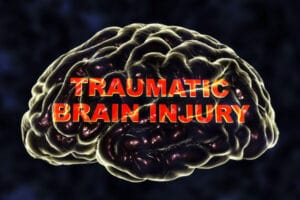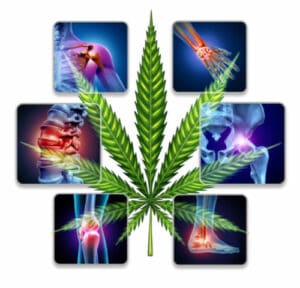
CRPS Treatment with Ohio Medical Marijuana: The Facts
- Complex Regional Pain Syndrome Types I and II are both qualifying medical conditions for an Ohio medical marijuana card under the category of chronic pain.
- How medical marijuana helps treat CRP
- How to get a medical marijuana card for CRPS in Ohio
- How to use medical marijuana to treat CRPS
Question: Can I get an Ohio marijuana card for Complex Regional Pain Syndrome?
In May of 2021, a Medical Board of Ohio panel approved three new qualifying conditions for an Ohio medical marijuana card. Arthritis, chronic migraines, and complex regional pain syndrome (CRPS) were determined to qualify under the category of chronic or intractable pain.
Patients who are approved by an Ohio medical marijuana doctor to treat CRPS can now shop at any of 52 Ohio dispensaries. Also, last month, the Ohio Board of Pharmacy added 73 more dispensary licenses to be awarded later this year.
Ohio medical marijuana patients may purchase and possess up to a 90-day supply of medical marijuana in any form based on the recommending doctor’s prescription. According to Ohio Medical Marijuana Control Program data, more than 155,000 Ohioans have purchased medical marijuana since dispensary doors opened in 2019.
A bit about CRPS
CRPS comes in two types — Type I and Type II. This mysterious and debilitating condition affecting millions of individuals worldwide comes with excruciating pain. The condition is thought to be caused by injury or trauma of the peripheral nerve.
Sadly, CRPS has no cure. Patients are often treated with opioids, steroids, or surgery, all of which come with additional health risks. Opioids can cause liver damage, constipation, and addiction. Steroids can cause weight gain, muscle weakness, insomnia, GI issues, osteoporosis, anxiety, depression, and psychosis. And surgery is a risky option that could make symptoms worse.
Patients with CRPS are also treated with physical and occupational therapy, spinal cord injections, local anesthetic, nerve blockers, Botox injections, anti-anxiety, and antidepressant medications.
Medical marijuana offers a safe and effective treatment for many patients suffering with CRPS pain and the depression that often comes with the disease without addiction or any long-term side effects.
Learn more about medical marijuana for CRPS.
Medical marijuana for CRPS
According to a post at NationwideDispensaries.com, “Trauma and chronic pain are known to significantly deplete cannabinoids produced by the body’s inherent endocannabinoid system (ECS). The application of medical marijuana has been shown to simultaneously interact with and replenish a deficient ECS, resulting in symptom relief.”
The article discusses several clinical studies on medical marijuana for CRPS such as a 2012 report in the Journal of Neurology, Neurosurgery, and Psychiatry which claims that 29 percent of the participants who were given cannabis pills experienced a significant reduction in stiffness, pain, and muscle spasms.
In a later study published in the Journal of Pain in 2013, patients who were administered low and medium cannabis doses reported noticeable pain reductions with no discernable side effects.
And in a 2014 clinical study from PMC titled, “Low Dose Vaporized Cannabis Significantly Improves Neuropathic Pain,” the authors stated that medical marijuana was, indeed, effective at relieving pain with minimal psychoactive effects.
How to get a medical marijuana card in Ohio
To obtain an Ohio medical marijuana card, patients must be approved by a state-certified medical marijuana doctor. The state requires patients to provide relevant medical records to confirm their diagnosis.
Under Ohio’s Covid-19 emergency rules, Ohio Physicians are permitted to evaluate medical marijuana patients via TeleMedicine (phone or video conference) in lieu of an in-person visit.
If approved, patients receive a signed letter from the doctor as a placeholder until they download a medical marijuana card from the Ohio Board of Pharmacy. Although the recommendation letter does not give the patient access to Ohio dispensaries, it does offer legal protection under Ohio marijuana laws.
Once approved, patients must pay a $50 annual fee. Patients with disabilities, supplemental income, veteran status, or on social security may qualify for a 50% discount.
Patients under the age of 18 must have the consent of a parent or legal guardian.
How medical marijuana is used to treat CRPS
- Smoking medical marijuana and vaping cannabis oil offer the fastest relief. However, patients with respiratory issues and high blood pressure should to avoid these delivery methods.
- Cannabis concentrates including rosin, crumble, wax, and shatter offer high potency and can be consumed via a vape pen or dabbing rig. Concentrates can also be mixed with dried flower and rolled into joints or smoked in a pipe. They can also be used in cooking.
- Cannabis tinctures come with a dropper for accurate dosing. Drops are placed under the tongue where they enter the bloodstream quickly.
- Cannabis-infused capsules are taken orally and can take up to 20 minutes to take effect.
- Cannabis edibles come in many forms such as brownies, cookies, candies, and gummies. Edibles can take as long as 90 minutes for the effects to be felt depending on whether they are taken with a meal.
Also, while cannabis products containing THC are only available at marijuana dispensaries, all patients can buy CBD online without a medical marijuana card, assuming it was derived from hemp.
Best medical marijuana strains for CRPS
The best medical marijuana strains for treating CRPS will ideally have a balance of THC and CBD. Marijuana strains that are effective at reducing pain include Harlequin, Cannatonic, ACDC, and Jack Herer. These strains offer varying levels of THC. Some experimentation is usually required to determine the ideal mixture and dosage.
Not all dispensaries carry these strains. A knowledgeable budtender can direct patients to similar strains with similar effects.
Sources and additional reading
- How to get an Ohio medical marijuana card
- List of Ohio medical marijuana doctors
- List of Ohio medical marijuana dispensaries
- Activation of cannabinoid receptor 2 attenuates mechanical allodynia and neuroinflammatory responses in a chronic post-ischemic pain model of complex regional pain syndrome type I in rats
- Role of the Cannabinoid System in Pain Control and Therapeutic Implications for the Management of Acute and Chronic Pain Episodes
- Complex regional pain syndrome
- Causalgia (CRPS Type II): Definition, Symptoms, Treatment








